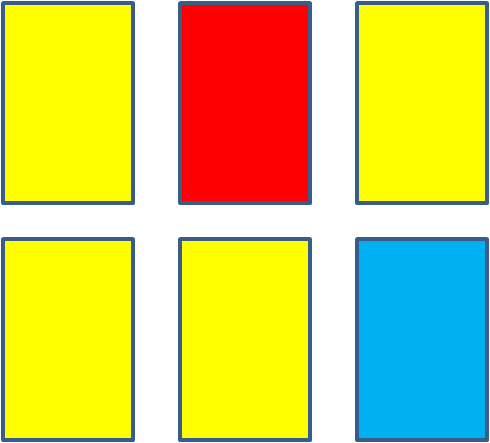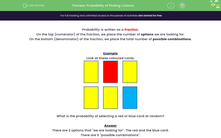Probability can be written as a fraction.
On the top (numerator) of the fraction, we place the number of options we are looking for.
On the bottom (denominator) of the fraction, we place the total number of possible combinations.
Example
Look at these coloured cards.

What is the probability of selecting a red or blue card at random?
Answer
There are 2 options that we are looking for - the red and the blue card.
There are 6 possible combinations.
The probability of choosing a red or blue card is 2/6 which simplifies to 1/3.
Having done that, what is the probability of choosing a yellow card?
There are 4 yellow cards out of a possible 6 cards, so the probability is 4/6 which simplifies to 2/3.
.jpg)
Can you see that the two answers of 1/3 and 2/3 add together to make the number 1? There is no other possible combination other than the ones we have looked at, so the total will be 1.
The probability of something happening, plus the probability of it not happening will always equal 1.
Let's have a go at some questions now.








